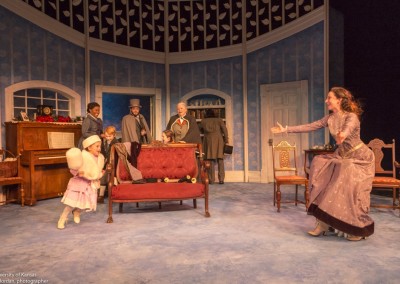A Doll's House by Henrik Ibsen, adapted By Frank McGuinness
KU TheatreDirector's Program Notes
A Doll’s House is also very much about social class and the pursuit of economic freedom. While this theme is oftentimes overlooked, it undergirds and shapes the lives of each character. Helmer is buoyed by his newfound status as a bank manager and the “good salary” that comes with it, Mrs. Linde and Krogstad are desperate for employment, Helene and Ann Marie are dutiful servants whose livelihoods depend on doing their jobs to satisfaction, and of course Nora’s predicament regarding “the forgery” is rooted in financial dealings. Even the whimsical Rank offers every indication of enjoying his comparatively privileged upper-middle class station in society. Thus, status and the procurement of money are jointly central to the play’s relationships and each character’s need to manage the social, economic, and moral forces of late-19th century Europe.
In capitalizing on the play’s structure and sociocultural themes, we have set our production in the period of Ibsen: Norway c. 1880. When A Doll’s House premiered in 1879 it was met with controversy and furor. In departing from the melodramatic stage conventions of the time, Ibsen crafted a searing portrayal of domestic life in Modern Europe. The realistic writing style he introduced, thereby rendering him the so-called “father of modern drama,” caused vitriolic responses from audiences and critics alike. Unlike his earlier social dramas like The Pillars of Society, he pulled no punches and crafted an ending that was as poignant and disturbing as it was perceived to be outrageous and triumphant. As such, the play’s signature “door slam heard around the world” still has relevance for us some 135 years later.
Cast & Design Team
- Set Design:
- Dennis Christilles
- Costume Design:
- Leah Mazur
- Lighting Design:
- Mark Reaney











